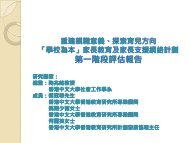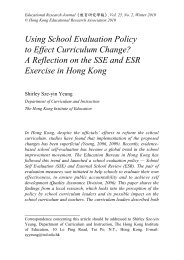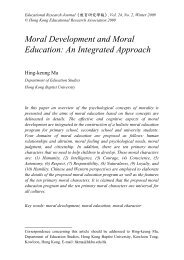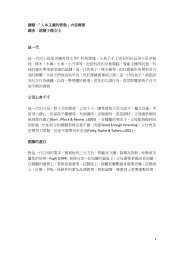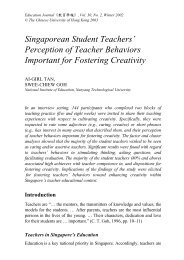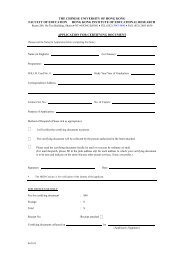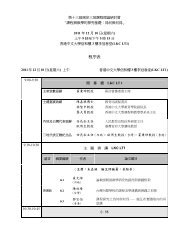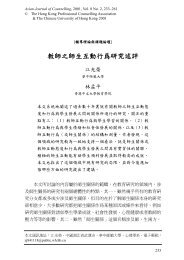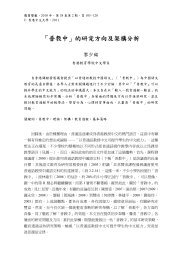Filial Therapy as a Cross-Cultural Family Intervention - The Chinese ...
Filial Therapy as a Cross-Cultural Family Intervention - The Chinese ...
Filial Therapy as a Cross-Cultural Family Intervention - The Chinese ...
Create successful ePaper yourself
Turn your PDF publications into a flip-book with our unique Google optimized e-Paper software.
Daniel S. Sweeney, Catherine Skurja<br />
culturally. Ho (1992) <strong>as</strong>serts that in therapy with “children whose cultures<br />
do not endorse open expression of feelings, especially to a nonkin member,<br />
play sometimes can be a child’s only form of communication. Playing in<br />
therapy permits children to verbalize conscious material and <strong>as</strong>sociated<br />
feelings safely and to act out unconscious conflicts and fant<strong>as</strong>ies” (p. 127).<br />
Ho also suggests that the Asian work ethic may view play <strong>as</strong> a frivolous<br />
activity, noting that “Asian parents may not consider play <strong>as</strong> productive to<br />
solving their children’s problems, which they think often center around too<br />
much play and not enough serious work” (p. 128).<br />
This points to an important issue in the filial therapy process. Huang<br />
and Ying (<strong>as</strong> cited in Gibbs & Huang, 1998) found that it is important to<br />
educate parents <strong>as</strong> to the efficacy of play, especially when working with<br />
parents who stress academic excellence. Since education is valued in many<br />
Asian cultures, the educational component of filial therapy can and should<br />
be highlighted. As opposed to other forms of counseling interventions, filial<br />
therapy is both psychotherapeutic and psychoeducational. A primary<br />
educational goal of filial therapy includes the teaching of parenting skills to<br />
be used within the family <strong>as</strong> opposed to establishing a dependent counseling<br />
relationship.<br />
In work with the Japanese-American population, Nagata (<strong>as</strong> cited in<br />
Gibbs & Huang, 1998) reported that play therapy is an effective and important<br />
form of therapy. <strong>The</strong> use of play therapy allows themes to emerge that are<br />
unlikely to be expressed in traditional family therapy or with the use of<br />
behavioral treatments. She echoes the caution noted above, however, that<br />
excessive play can be seen <strong>as</strong> a frivolous activity by some Japanese-American<br />
parents and it may be challenging for some to accept play therapy <strong>as</strong> a valid<br />
form of treatment. With a strong emph<strong>as</strong>is on using free time for homework,<br />
parents may see the use of play therapy <strong>as</strong> indulgent, looking instead for<br />
more concrete signs of progress. For this re<strong>as</strong>on, Nagata stressed the<br />
importance of clearly delineating the goals of the therapy to the parents. Gil<br />
186



